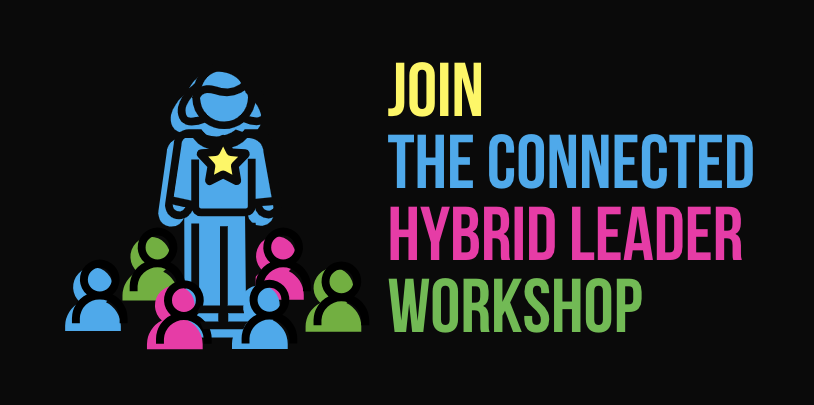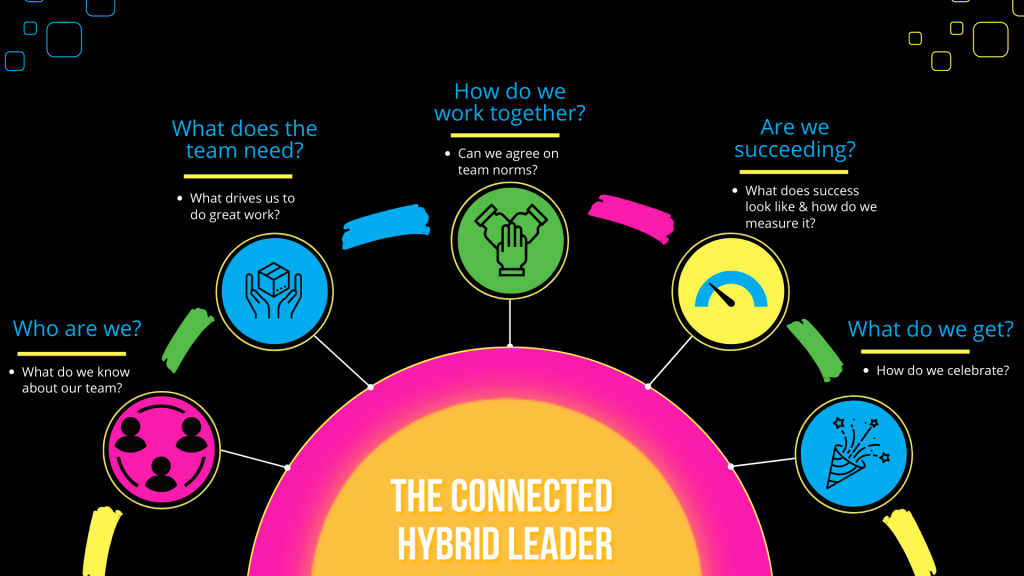Management By Working Out Loud
A BLUEPRINT FOR REMOTE-FIRST LEADERSHIP
Successful hybrid leadership results from a finely tuned, consciously chosen combination of skill set, mindset, and toolset. What’s the digital version of “management by walking around”? Management by working out loud!
In the ever-evolving landscape of modern work, successful leadership has taken on a new dimension, where physical boundaries blur, and digital collaboration reigns supreme. Welcome to the era of “Management by Working Out Loud.” In this article, we embark on a journey to explore the intricacies of effective leadership in remote and hybrid teams. We’ll delve into actionable strategies that combine the right skill, mind, and tool sets, allowing leaders to navigate these dynamic work environments with finesse. From establishing sustainable routines to tapping into intrinsic motivations, building trust, and measuring success, join us in uncovering the secrets to thriving in the digital age of leadership.
Our character matters
In a remote-first environment, leaders must model the values and behaviors that they want to see. Our character plays a crucial role in creating a positive organizational culture and is a competitive edge at all levels of the organization.
According to MITSloan, many equate character solely with ethics, but it has a broader impact on decision-making and individual well-being. Research shows that organizations led by individuals with “high character” (rated highly on integrity, responsibility, forgiveness, and compassion) tend to have significantly better financial performance, with nearly five times the return on assets compared to those with low character leaders.
The Management 3.0 team used to review and choose their values twice yearly – and then reinforce the associated behaviors through Value Stories and Merit Money.
Who are we? What do we know about our team?
In remote and hybrid work, it’s essential to establish a sustainable work routine that supports both productivity and well-being.
Team members are encouraged to develop a work routine that aligns with their personal needs and work responsibilities. Personal user manuals are valuable tools for team members to communicate their preferences, working styles, and expectations. By sharing user manuals, team members gain insights into each other’s needs and work habits, fostering better collaboration and understanding.
Building trust is a cornerstone of successful remote and hybrid teams. Leaders should prioritize one-on-one meetings with team members. These meetings create a platform for open and honest discussions, allowing team members to address minor, informal, or complex topics. This practice enhances communication and strengthens working relationships within the team.
What does the team need? What drives us to do great work?
In remote and hybrid work scenarios, understanding the needs and motivations of your team members is paramount for fostering a productive and engaged workforce. Beyond meeting external goals, tapping into people’s intrinsic motivations is crucial to inspire them to excel. One valuable approach, influenced by the Management 3.0 practice of “Moving Motivators,” focuses on intrinsic drivers.
The Management 3.0 practice of “Moving Motivators” encourages leaders to explore what motivates their team members personally. This tool involves discussions around Relatedness, Freedom, Honor, Mastery, and other intrinsic drivers. By using “Moving Motivators,” leaders gain insights into the unique drivers of each team member.
To drive great work, it’s essential to address not only external objectives but also the underlying needs and motivations of the team. This approach fosters a more profound sense of commitment and engagement. For example, offering opportunities for skill development and learning aligns with the desire for mastery while granting autonomy in decision-making taps into the need for control and responsibility.
How do we work together? Can we agree on team norms?
Establishing clear and agreed-upon team norms is a cornerstone of effective collaboration in remote and hybrid work environments. It’s essential to create a team agreement that outlines how the team will operate, why it’s crucial, and how it contributes to building trust among team members.
A team agreement serves as the guiding compass for your team’s collaboration. It outlines the rules of engagement, communication practices, and expectations for every team member. This clarity is essential, especially in remote settings, where physical proximity and informal interactions are limited.
When team members know what to expect from each other and how they will work together, it reduces uncertainty and minimizes potential conflicts. This predictability builds trust because everyone is on the same page.
Are we succeeding? What does success look like, and how do we measure it?
Gauging team success in a way everyone understands is challenging for any leader. Success hinges on finding the right balance between structure and autonomy. The “tight loose tight” framework encourages leaders to define clear goals and expectations (tight), allow flexibility in how team members achieve them (loose), and then ensure there’s accountability and feedback (tight). This approach ensures alignment while empowering individuals to work in ways that suit their strengths and preferences.
To measure success, teams should embrace the practice of “working out loud.” This involves making work visible and transparent to all team members. Team members can stay informed and contribute collaboratively by regularly sharing progress, updates, and challenges. This open approach fosters transparency and mutual accountability.
Virtual offices and collaboration platforms can help visualize team dynamics and success. These tools provide a digital workspace where team members can interact, share information, and collaborate in real time. Features like virtual whiteboards, project timelines, and shared documents enable teams to visualize their work progress and identify areas for improvement.
Success is not static; it’s an ongoing process. Teams should prioritize continuous improvement by regularly reviewing their performance and adjusting their strategies and practices. This iterative approach ensures that the team adapts to changing circumstances and strives for excellence.
What do we get if we succeed? How do we celebrate?
Acknowledging and celebrating team accomplishments is vital for maintaining morale and motivation. When success is achieved, take the time to celebrate together. Expressing gratitude and celebrating achievements helps create a positive work environment and reinforces the team’s sense of accomplishment.
Celebrations should be personalized to resonate with each team member’s unique motivations. Rather than a one-size-fits-all approach, consider what each team member values most. It could be additional responsibilities, public recognition, professional development opportunities, or even time off to pursue personal interests.
While personalization is essential, collective celebrations involving the entire team foster a sense of belonging and camaraderie. Virtual gatherings, team meetings, or shared moments of acknowledgment can create a supportive and motivating environment.
Celebrations are not static; they should evolve based on team feedback and changing motivations. Regularly solicit input from team members on what types of recognition and rewards resonate with them most. This feedback-driven approach ensures that celebrations remain meaningful and motivating.

COLLABORATIONSUPERPOWERSPODCAST
SUBSCRIBE TO THE PODCAST
ITUNES
STITCHER
SPOTIFY
ABOUT THE PODCAST
Interviews packed with stories and tips for those whose business models depend upon successfully bridging distance!
RELATED RESOURCES
Check out some of our all-time favorite resources for leadership.




Many thanks for your inspiring post Lisette.
By the way, one benefit of remote management is that it creates the conditions to do effectively things that we forget to do when this constraint doesn’t exist.